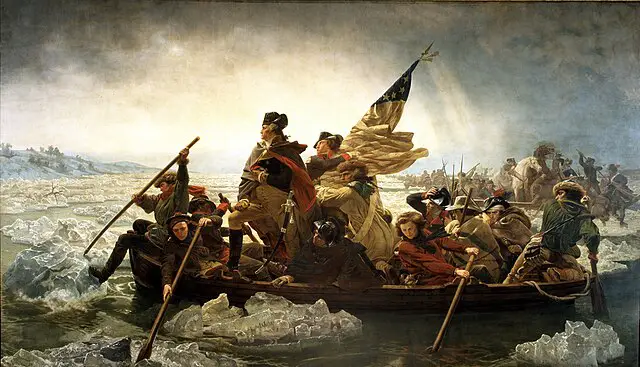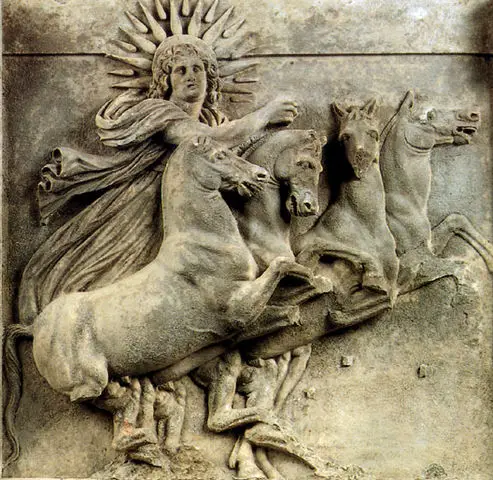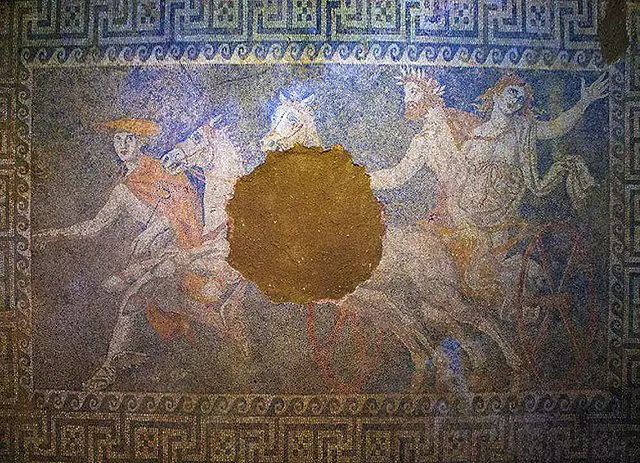| Further Reading | The 5 Roman Emperors Of The Julio-Claudian Dynasty |
From the start of the Roman Empire in 27 BC we have accounts of Romans talking about a mythical land of silk in the far east. Over the course of the Roman Empire the Romans would call the land of China various names, all of which tended to circle around trade.
Starting in 27 BC the Romans would call China different names, however the most common until the 8th century was Seres. From 27 BC up through 166 AD the Romans would call China Seres or Serica due to the silk that came to Rome from China.
Here at The History Ace I strive to publish the best history articles on the internet. If at the end of this article you enjoyed it consider subscribing to the free newsletter and sharing around the internet.
Without further ado, here is an entire article going over what the Romans called China
Romans Encountering China In 27 BC
Sometime between the years of 200-300 BC the Greeks would be the first ‘western’ state to encounter the Quin dynasty in China.
We have archeological evidence from the tomb of the first emperor of the Qin dynasty that the Greeks gave gifts to the Emperor. Surrounding Emperor Qin Shi Huang were gifts of Greek technology and artworks.
Greece would fall to Rome around 100 years later. This was when Rome first began to hear about the mythical land of silk called China. However, most historians and academics would think it was a myth until around 27 BC.
Around 27 BC. Romans would start to publish several accounts of lands in the far east that they called Seres. Some of the most famous of these accounts came from the classic Latin writers Virgil, Horace, and Strabo. In these accounts the writers offer vague explanations and depictions for the land in the far east.
The 3rd century AD Roman Historian Florus mentions that the first Roman Emperor Augustus received several envoys and ambassadors from other ancient states. One of these states Florus called Seres or the land of the silk. Florus mentions that this was a momentums occasion as their complexation was different and that they brought amazing gifts.
This is the only mention we have of Augustus receiving a Chinese ambassador. Several historians have theorized that maybe this was a trading or exploration ship or that Florus was simply wrong in his explanation. However, we do know that Roman influence reached China during this time because historians have found Roman coins minted during the reign of Tiberius in modern China.
However, the first name that the Romans called China was Seres due to valuable silk that was exported.
Expanding Communication Between Rome And China Resulting In Two Names For China
The Romans continued to call China Seres up until 166 BC. During the reign of either Roman Emperor Antoninus Pius or Marcus Aurelius a diplomatic envoy was sent from Rome to China.
It was around this time that the name for China began to change in Rome. At first China was called Seres due to production of silk but that name could have applied to anything east of the Parthian Empire.
Once the diplomatic envoy arrived in China in 166 BC the Romans began to understand that their name for China was inherently flawed. The Romans had thought that modern India/Vietnam was China when it was in fact much further east.
As such a new name formed for China in Rome, Sinae. This gave China two names according to the ancient Romans. First, was old Serica or Seres which translates to land of the silk. Second, was the new name of Sinae which was given to the empire of the Qin dynasty.
However, even these names were wrong as by the time the Romans had gotten to China the Qin dynasty had fallen. Instead it was replaced by the Han.
Sometime around 170 AD an Roman from Egypt would travel across the world to China. We don’t know who the author was but his book is called Periplus of the Erythraean Sea. This book provides details that have been confirmed as correct about cities as far as China.
However, after the death of Marcus Aurelius in 180 AD the Roman Empire would be sent into turmoil and would not engage with China up until the 6th century.
As such during the peak of the Roman Empire’s power there were two names for China; Sinae and Seres.
The 6th Century Would See The Final Name of China In The Roman Empire
After the ‘fall’ of the Roman Empire the eastern Empire would continue to prosper and grow for several centuries.
In the 6th century a Roman Monk would take it upon himself to travel from Alexandria to China and document his journey. This monk’s name was Cosmas Inicopleustes and his work has fortunately survived to this day.
When Cosmas finally arrived in China he began to call it by another name Tzinista. This name would combine the previous names of Sinae and Seres along with a new name that demonstrated that there was nothing left to explore.
Out of this combination of Roman names for China came the name of Tzinista which translates from Greek to meaning Jinn. Several historians have theorized why this name was the one that took hold.
One such theory has to do with the concept of fallen angels landing in the far east. Since this was the last place that a Roman could walk to, it was a fitting name.
As such the last name that the Romans called China was Tzinista.
Conclusion
There you have it; an entire article dedicated to the question of what the Romans called China.
Sino-Roman relations is a fascinating topic. Every year we discover new evidence that demonstrates that these two great cultures were aware of each other and maybe even traded as far back as the first century BC. History graduate students will find a wealth of material to build out a research project.
Here at The History Ace I strive to publish the best history articles on the internet. If you enjoyed this article then consider subscribing to the free newsletter and sharing around the internet.
Further, you can check out some of the other articles below.
-
How The American Revolution Changed The World

Here is how the American Revolution changed the world. Many people are not aware of just how important this event actually was.
-
Why The Roman People Loved Chariot Racing

Why did the Roman people love chariot racing? Well it all comes down to these 3 reasons.
-
The Design and Color of Roman Chariots

What was the design and color of Roman Chariots? Were they faster or slower then normal chariots? Well here is everything!
Sincerely,
Nick